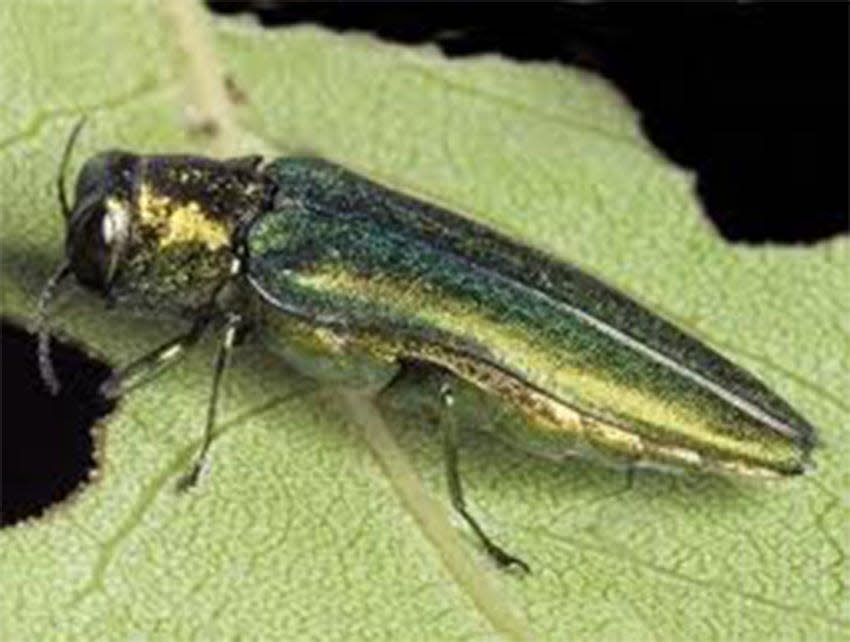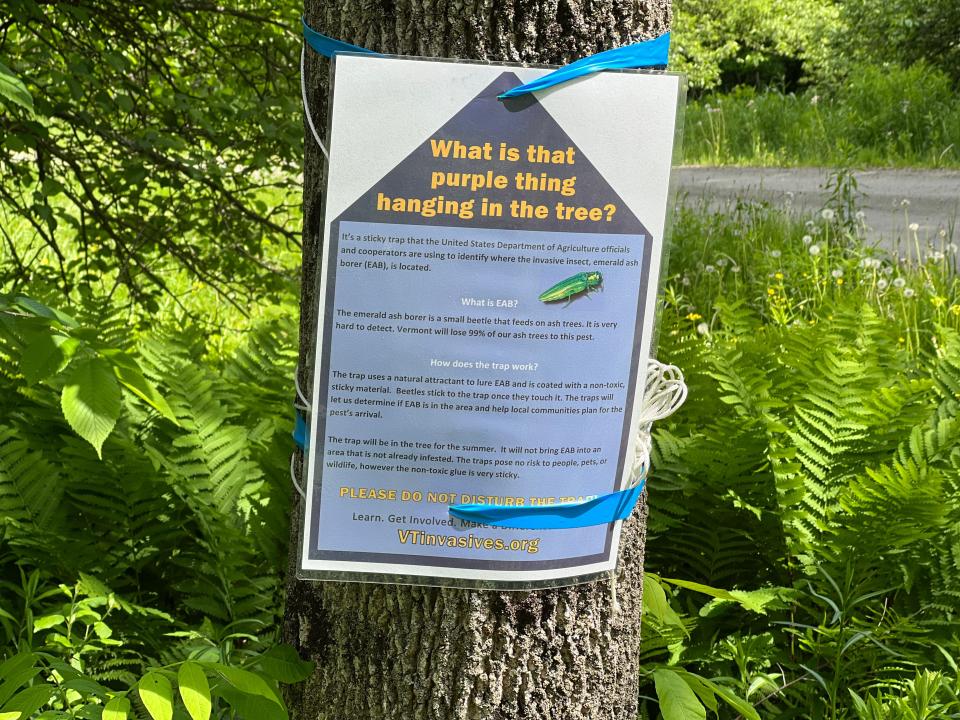The Emerald Ash Borer is a metallic green tree-destroying machine. Here's how to ID & report it

This mean, green, tree-destroying machine might be coming to your area — if it isn't already there.
The emerald ash borer, native to Asia, was first spotted in the U.S. near Detroit in 2002. It's believed the insect found its way to America in wood-packing material carried by ships or planes.
As the beetle continues to spread, here's what you need to know about the invasive insect.
Where has the emerald ash borer been spotted in North America?
Since its cross-Pacific trek, the emerald ash borer has been detected in more than 40 states and 5 Canadian provinces. The beetle has invaded most of eastern and central U.S. states, with Florida and Mississippi being notable exceptions.
"It's moving fairly rapidly," said Jim Moeller, a forest health specialist with the N.C. Forest Service, of its spread across North Carolina. "And there's really no way of stopping it."
To see where the insect has been spotted and when it was first detected in certain counties, go to http://www.emeraldashborer.info/state-detection-table
Interactive map: Top 5 most common invasive animal and insect in every US state
Coming soon to Wilmington: Invasive pest that has decimated millions of NC ash trees
Why is the emerald ash borer a problem?

The metallic green beetle attacks ash trees. Ash lumber, known for its staining potential and ability to mimic oak according to the Hardwood Distributor's Association, is commonly used for furniture, cabinetry, sports equipment and food containers.
According to the Emerald Ash Borer Network, the bug has killed hundreds of millions of ash trees in North America and caused hundreds of millions in damages.
The beetle's larvae feed on the inner bark of ash trees, impeding the tree's ability to transport water and nutrients. Additionally, woodpeckers like to eat the larvae, which causes more damage to the trees.
There are treatment options that can serve as a control measure for the beetle, but there is no way to completely prevent its damage, according to the U.S. Department of Agriculture.
What should you do if you see an emerald ash borer?
If you believe you have spotted an emerald ash borer or the damage it has caused, you should contact your county extension office or call one of the contacts suggested by the Emerald Ash Borer Network.
Gary L. Parsons, an Emeritus Curator at the Michigan State University Department of Entomology, has created an emerald ash borer identification guide to help ID the beetle.
This article originally appeared on Savannah Morning News: Emerald ash borer: Where the beetle is found, how to ID

